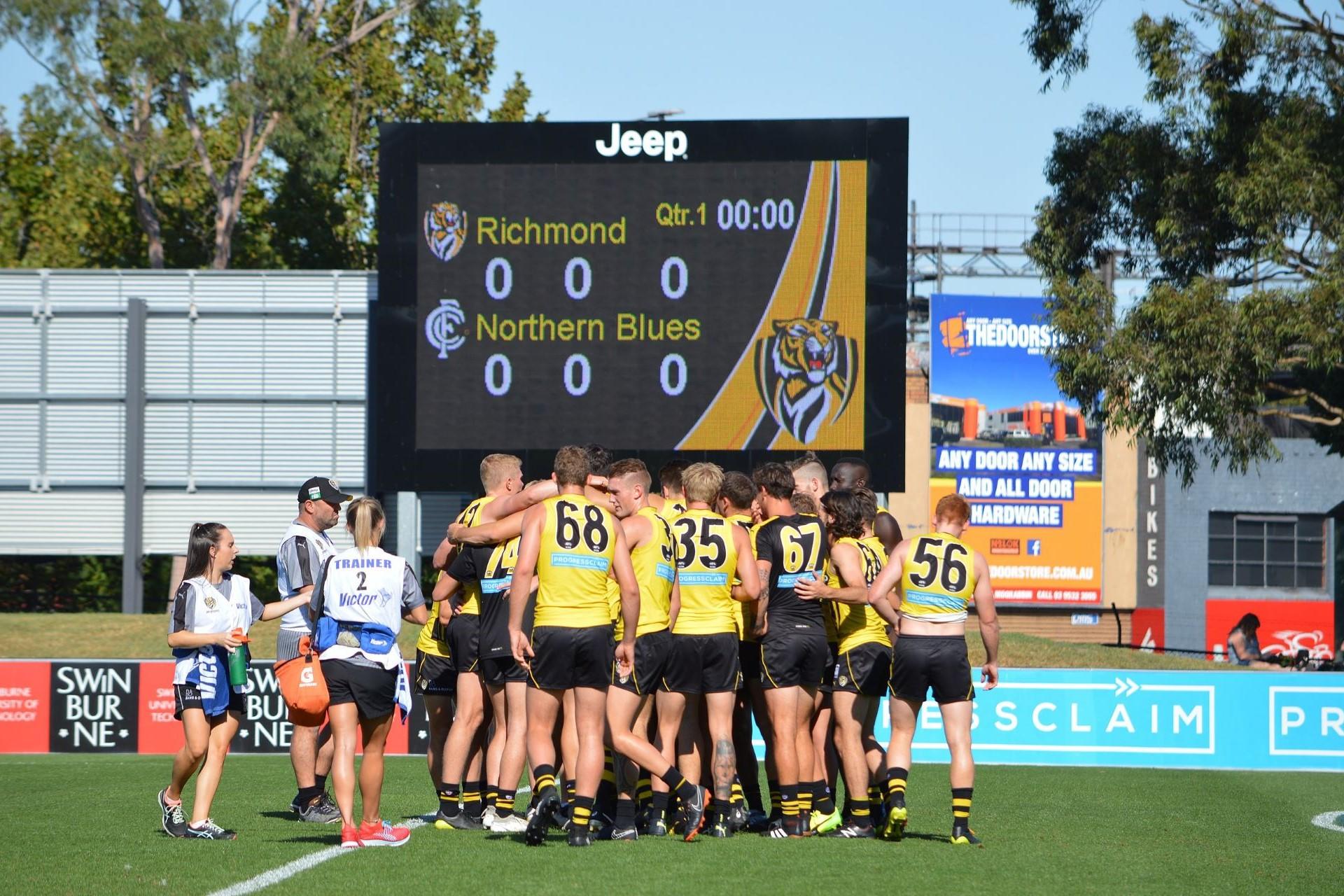Footy, in Australian English, or Aussie rules or Australian Rules Football elsewhere in the world, is a unique sport. While predominantly played in Australia, the sport boasts the world's best-attended domestic sporting league per capita.
It's fairly different from other ball sports, such as soccer, American football, basketball, and rugby football, but it also shares many similarities with each of these sports.
So, how did Aussie rules come to be? Here's the history of footy in Australia.
1858
First Recorded Footy Match
Scotch College plays Melbourne Grammar at Yarra Park, Melbourne.
1859
Rules Established
The Melbourne Football Club creates the first formal set of rules for Aussie rules, known as the "Melbourne Rules."
1877
VFA Formed
The Victorian Football Association (VFA), the first organised Aussie rules competition, is formed.
1897
Clubs Break Away
Several clubs break away from the VFA to form the Victorian Football League (VFL), including the original eight clubs: Carlton, Collingwood, Essendon, Fitzroy, Geelong, Melbourne, South Melbourne, and St Kilda.
1925
VFL Expands
Footscray, Hawthorn, and North Melbourne are added.
1940s
World War II
World War II affects footy with players enlisting and clubs struggling to field full teams; VFL continues with an altered schedule.
1950s
Footy's Golden Age
Footy's "Golden Age" begins, with the Melbourne Football Club winning five premierships under coach Norm Smith and player Ron Barassi.
1982
South Melbourne Relocates
South Melbourne relocates to Sydney, becoming the Sydney Swans, the first VFL team outside Victoria.
1990
VFL Renamed
The VFL is renamed the Australian Football League (AFL), reflecting its national scope.
1997
Port Adelaide Joins
Port Adelaide joins the AFL, while Fitzroy Football Club merges with Brisbane Bears to form the Brisbane Lions.
2011
Gold Coast Suns Join
Gold Coast Suns join the AFL, expanding the competition to 17 teams.
2012
GWS Joins
Greater Western Sydney Giants join the AFL, bringing the total to 18 teams.
2017
AFLW Established
The AFL Women's (AFLW) competition is established, starting with 8 teams.
2023
Tasmania Given Licence
Tasmania Football Club (Tasmania Devils) is granted an AFL license to compete in the league from 2028.

Aboriginal Ball Games Predating Footy
If you're completely new to footy, let's start at the very beginning. As an Australian sport, footy cannot be discussed without mentioning the ball games played in Australia before the codification of Australian rules.
Naturally, European sports like soccer and rugby influenced Aussie rules. Still, Aboriginal ball games also arguably influenced the game in ways that make it uniquely Australian.
One such game was Marn Grook. This Aboriginal game involved punt kicking and catching the ball and games with large numbers of players, sometimes over 100 different players!
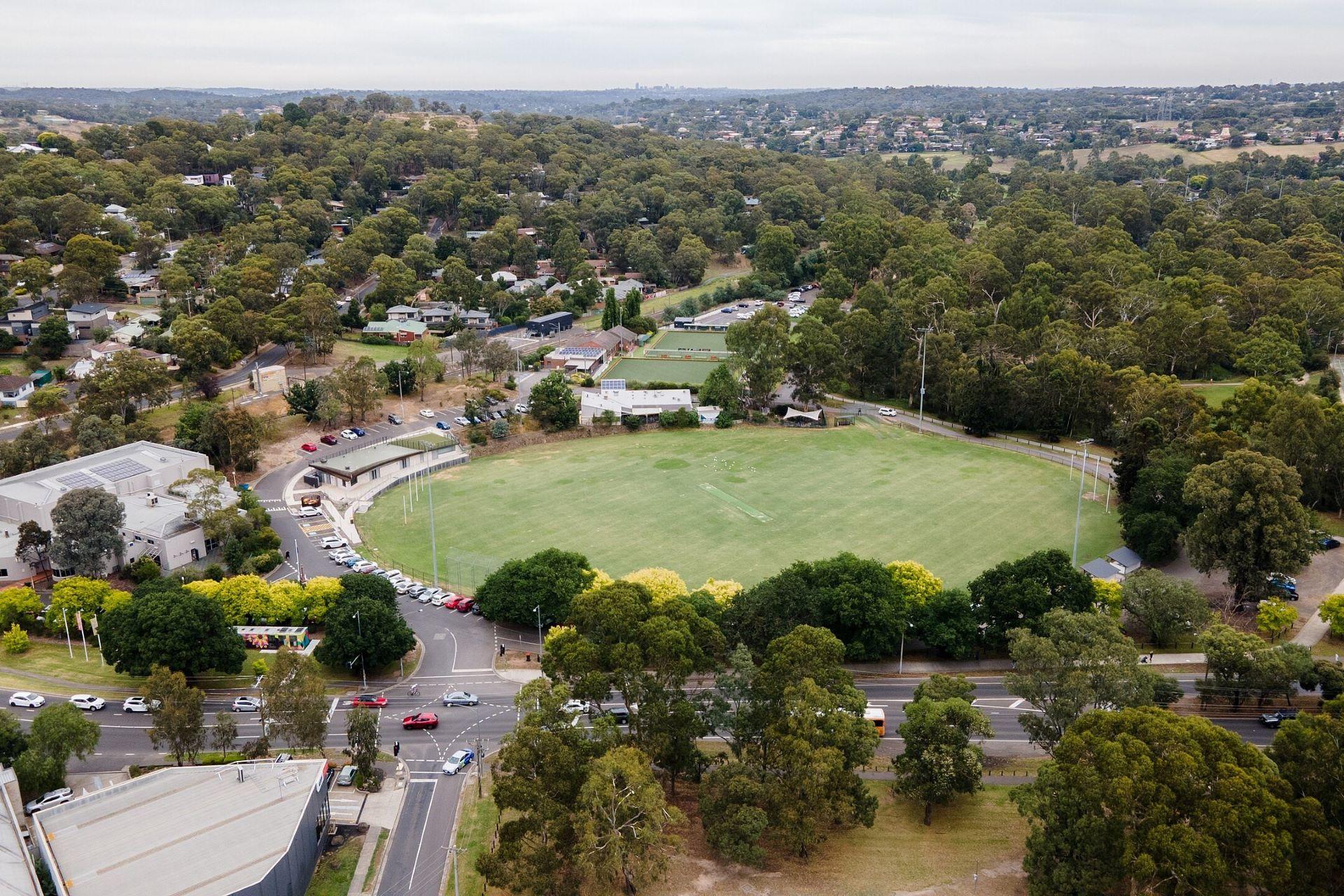
One of the key figures in codifying Aussie rules, Tom Wills, studied in England but was also aware of and knowledgeable about Indigenous ball games like Marn Grook. However, there have been many incredible Aboriginal AFL players between then and now.
The Aboriginal sport Marn Grook, meaning "game ball", is more about kicks and catches than scoring goals.
The Origins of Aussie Rules (1850s-1860s)
Much like soccer and rugby football, Aussie rules originated to keep cricketers fit during the winter when cricket couldn't be played.
The first recorded footy match was played in 1858 between Scotch College and Melbourne Grammar, two Melbourne-based schools. This match was at the site of what is now Yarra Park, which is right next to the Melbourne Cricket Ground.
While rugby and soccer took to a different field, footy is often played on a pitch similar to a cricket ground. Nowadays, most Aussie rules football grounds are also used for cricket, with cricket being played in the summer and footy in winter.
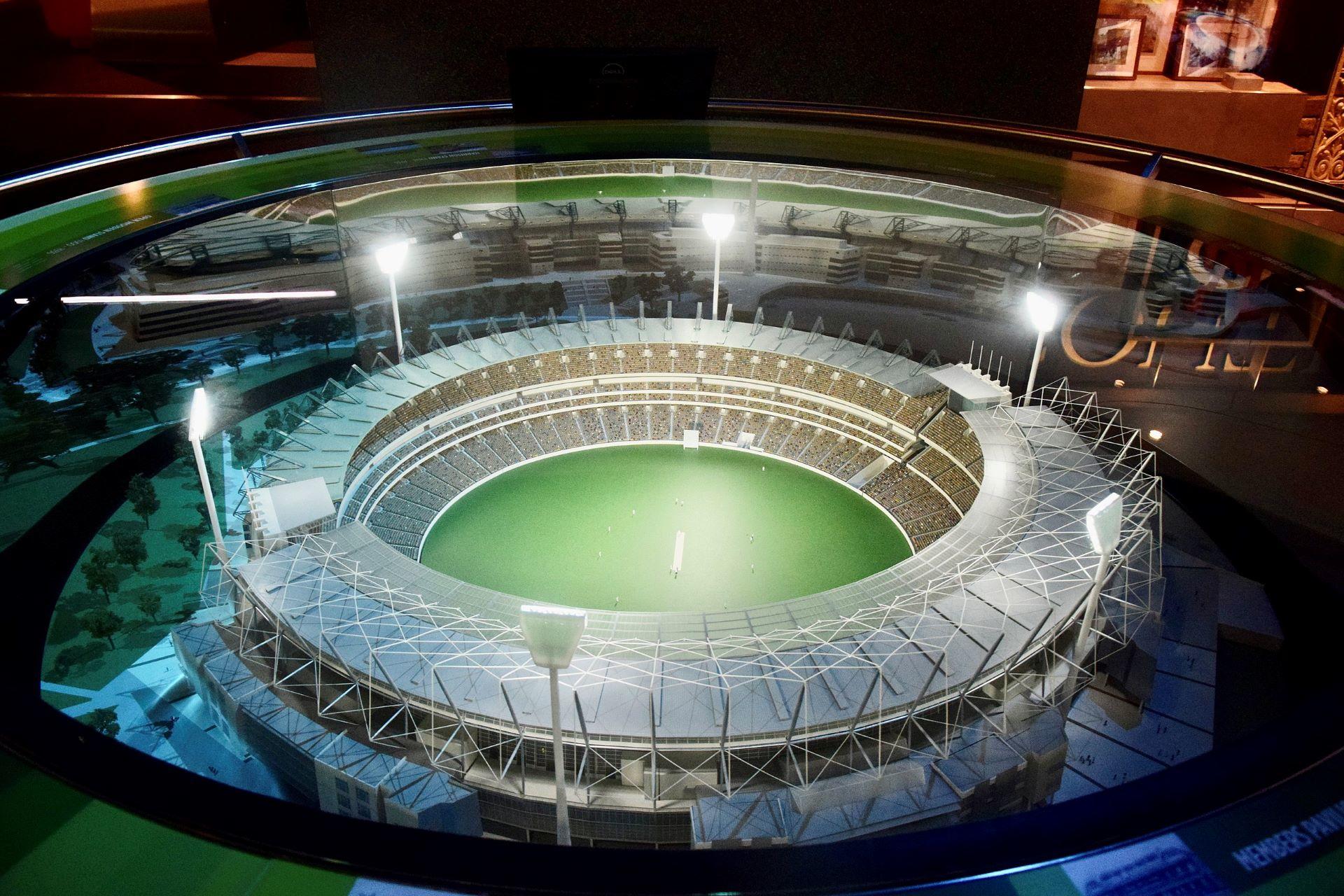
Establishing the Rules (1859)
The year following the first recorded footy match, the Melbourne Football Club created the first set of formal rules for the sport. Tim Wills, William Hammersley, James Thompson, and Thomas Smith drafted these "Melbourne Rules".
These rules established are still seen in many of footy's current rules, including the oval-shaped field of play, marking, the toin coss at the start of the match, and the distance between the goalposts.
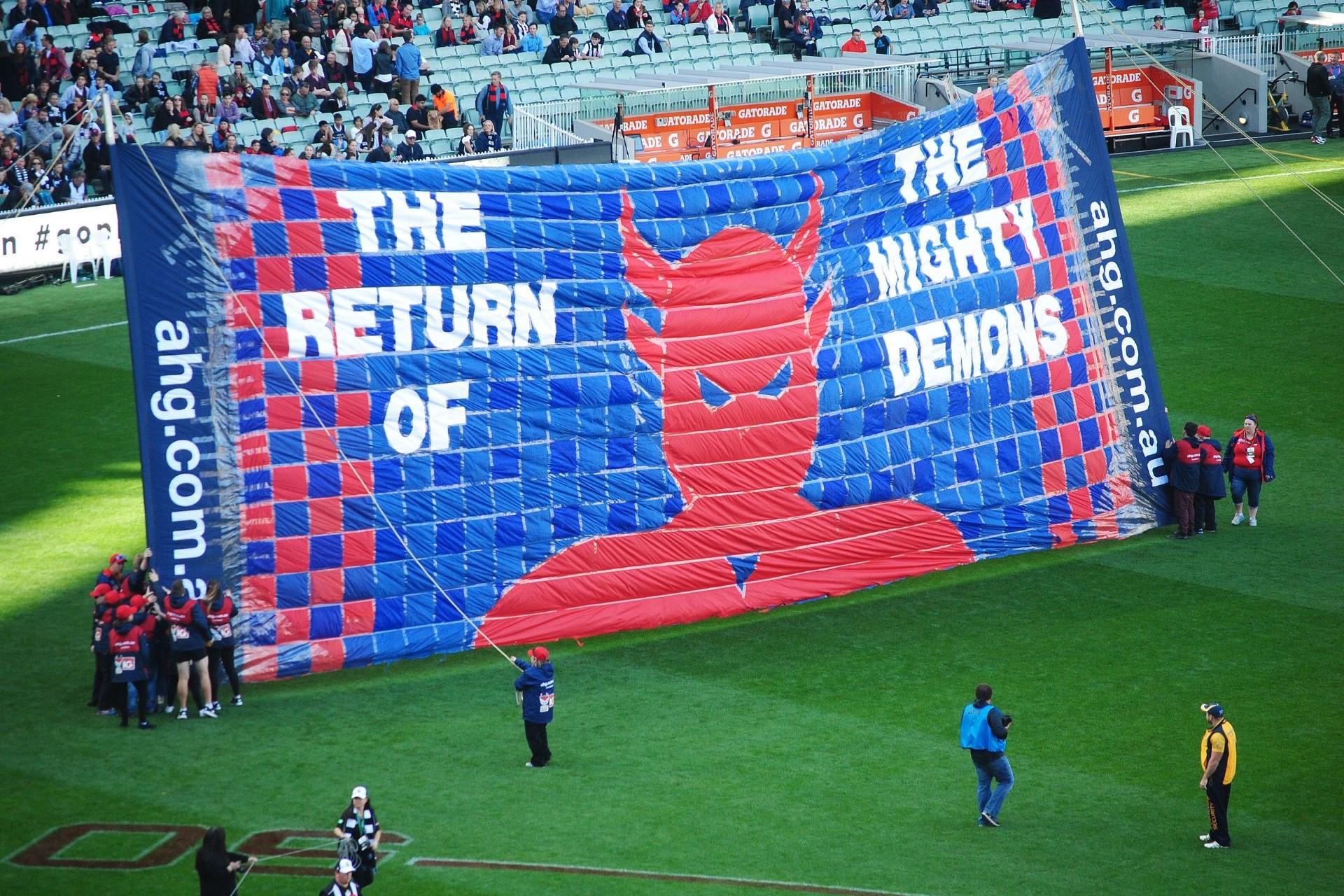
The Expansion of Aussie Rules (1870s-1890s)
From its origins in Melbourne, Aussie rules started spreading across Victoria. Eventually, its popularity reached other colonies of Victoria, South Australia, and Tasmania. Intercolonial matches helped spread the sport across Australia.
The Victorian Football Association (VFA) was formed in 1877 and became the first organised Aussie rules competition.
With different associations and leagues, footy would spend decades trying to create a national league.
The Foundation of the VFL (1897)
By the 1890s, footy was one of the most popular sports in Australia, especially in Victoria. Several clubs from the VFA broke away to form the Victorian Football League in 1897, the precursor to today's AFL.
These original eight clubs were Carlton, Collingwood, Essendon, Fitzroy, Geelong, Melbourne, South Melbourne, and St Kilda. In one way or another, these clubs are still in today's AFL. However, Fitzroy Football Club and South Melbourne Football Clubs merged or relocated, so you won't see these particular names today.

Footy and World War I (1900s-1910s)
In the early 20th century, the VFL established itself as the leading Australian Rules competition and attracted large crowds, particularly in Melbourne.
It was during this era that the game started to evolve tactically, and teams started using organised defensive and offensive play rather than the chaos of earlier footy matches.
However, like many other sports worldwide, the First World War greatly affected footy. Many players enlisted in the military, so many clubs could not field entire teams.
Footy continued in a limited capacity during the war, but after the war, the VFA was suspended from 1916 to 1917.
The war had an even more profound effect on a generation of players, with some never returning from military service.
Like sporting competitions across Europe and other sports in Australia, the First World War made maintaining regular sporting competitions like footy leagues almost impossible.
Aussie Rules During the Great Depression (1920s-1930s)
Once the war was over, the VFL started to experience a resurgence. In Melbourne, attending footy matches was part of the local culture, and in the 1920s, the VFL became increasingly professional.
In 1925, the VFL added the teams Footscray, Hawthorn, and North Melbourne, making the league 12 teams.
The Great Depression in the 1930s also impacted footy. Clubs faced financial difficulties, and unemployment led to reduced attendance. However, footy was still popular, even if fans or clubs couldn't necessarily participate in the sport as much as they would have liked. Many players had to take on other jobs to support themselves, and some clubs even had to merge or disband due to financial strain.
It was also around this era that the short-passing game started to be employed by footy coaches.
Footy, World War II, and the Post-War Recovery (1940s)
Much like the First World War impacted footy, the Second World War also limited the capacity with which clubs could operate.
Again, players enlisted, and clubs struggled to field teams. The VFL continued with an altered schedule and smaller player rosters.
Interstate competitions were disrupted, and the South Australian and Western Australian Leagues struggled like the VFL.
After World War II, Australian Rules Football quickly recovered, and the VFL reasserted dominance as the country's top footy league.
Despite grinding to a halt during World War II, footy didn't take long to recover after it.
The Golden Age of Footy (1950s)
The 1950s is often referred to as footy's Golden Age. Television was introduced in Australia, meaning more people than ever had the means to see the sport, with footy matches being televised.
The Melbourne Football Club dominated the VFL during this time, with coach Norm Smith and superstar player Ron Barassi winning five premierships between 1955 and 1960. This became known as the "Melbourne Dynasty".
Tactically, the game and positions evolved even more, with coaches like Norm Smith and his brother Len Smith refining it and innovating midfield mobility and versatility with the "ruck rover" position.
By this point, footy symbolised Australian identity, particularly in Victoria, South Australia, and Western Australia.
VFL Dominance and the Rise of Professionalism In Aussie Rules (1960s-1970s)
Across Australia, there had always been state leagues like the SANFL (South Australian National Football League) and the WAFL (Western Australian Football League). Still, the VFL ensured that it was the country's biggest and most lucrative footy competition.
Australian Rules Football was also becoming more commercialised, with sponsors and advertisers seeing the value in the sport.
During this time, Australian football clubs started becoming more like businesses than sporting clubs.
The rise of professionalism in the 1960s and 1970s laid the foundations for the million-dollar contracts that today's AFL stars are on.
This commercialisation allowed for footy stardom, with players like Ron Barassi, Ted Whitten, Bob Skilton, and others becoming household names. Without them, we wouldn't have today's highest-earning footy players.
In the 1960s, footy was emphasised by player fitness and team strategy. Top coaches employed organised defensive structures, zoning, and more advanced strategies.
In the 1970s, media coverage of footy helped grow fanbases beyond where the sport had been traditionally played and followed. As the sport grew, so did player salaries.
Teams started moving the ball more quickly during this era, with a “run and carry” style of play that used handballing and running more often.
National Expansion of the AFL (1980s-1990s)
In the 1980s, the VFL started expanding beyond Victoria and aimed to become the country's national footy competition.
South Melbourne relocated to Sydney in 1982, becoming the Sydney Swans and the first VFL team outside Victoria. The VFL was now in Victoria and New South Wales.
Towards the end of the 1980s and early 1990s, teams outside Victoria were added: the West Coast Eagles, the Brisbane Bears, the Adelaide Crows, and the Fremantle Dockers.
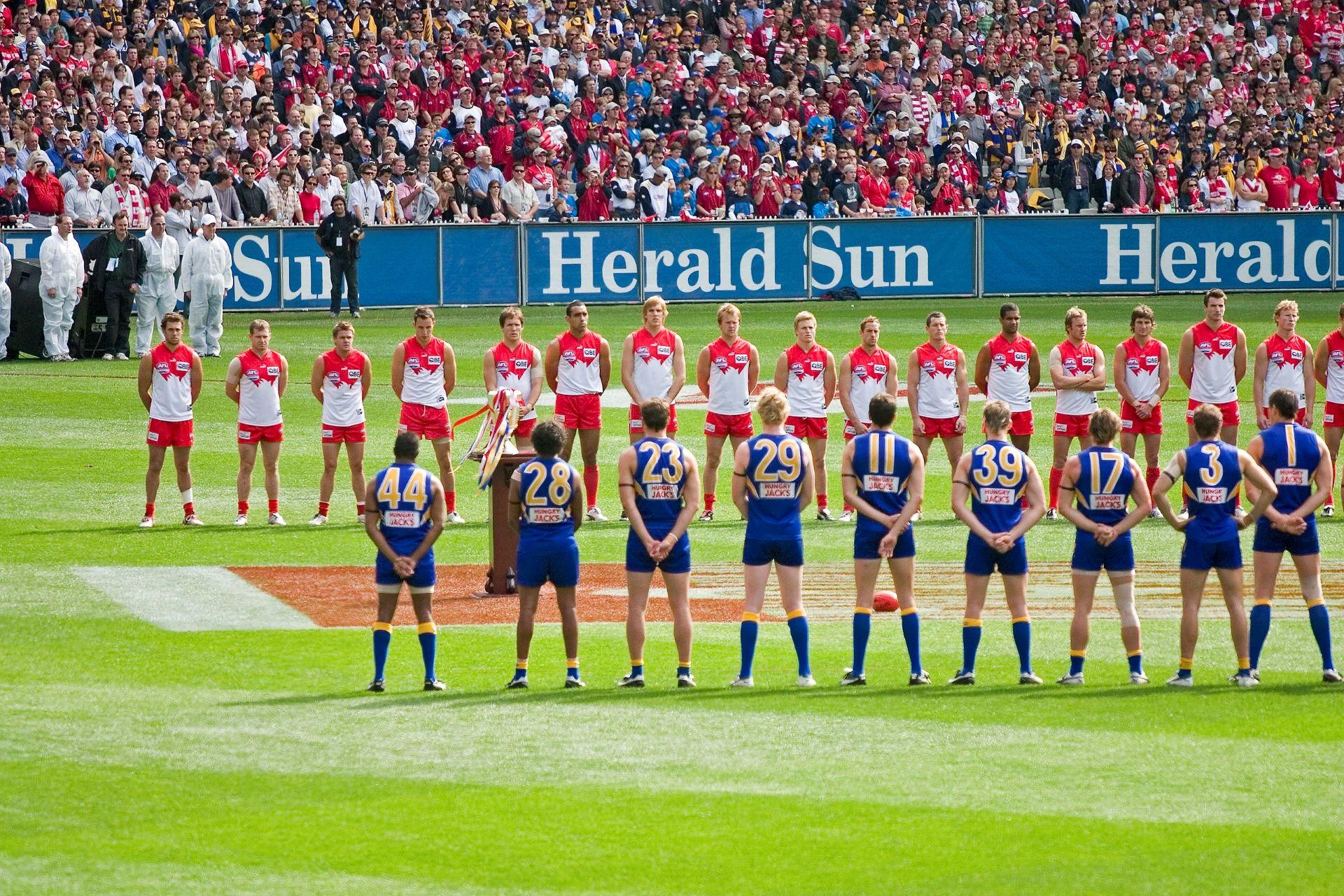
By the time Fremantle Dockers joined, the league included 16 teams. It represented the states of Victoria, New South Wales, Queensland, Western Australia, and South Australia.
The VFL was renamed the Australian Football League (AFL) in 1990, better representing the competition's national nature.
Port Adelaide was added to the league in 1997. However, the league still featured 16 teams as Fitzroy and Brisbane Bears merged to form the Brisbane Lions.
Modern Era AFL (2000s-Now)
Now, AFL is the country's leading Australian Rules Football competition and the best-attended sport in Australia. As mentioned earlier, it's also the best-attended domestic sporting competition per capita in the world, with stadiums packed with fans wanting to see the very best AFL players.
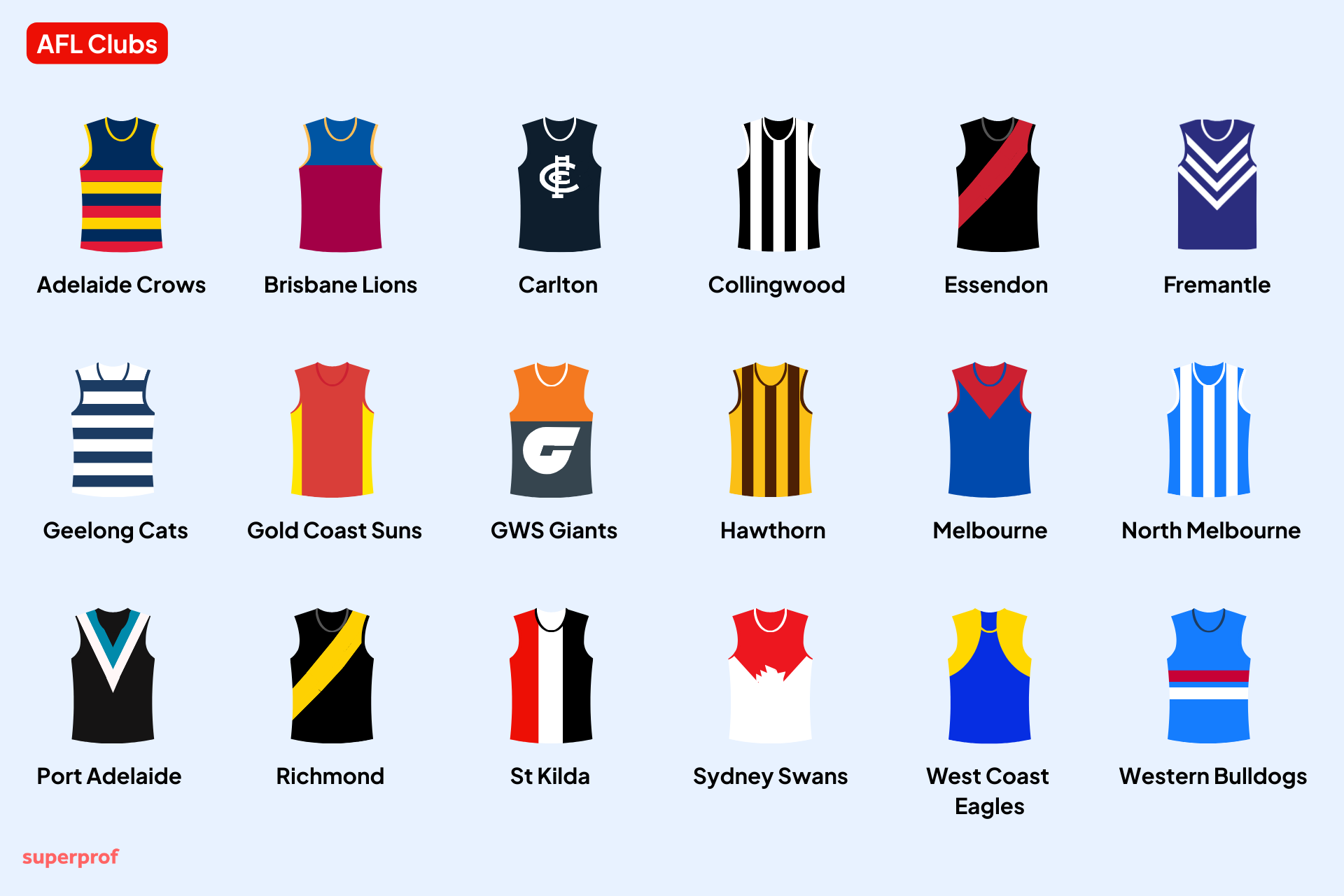
In the 2010s, Gold Coast Suns (2011) and Greater Western Sydney Giants (2012) were added to the league, bringing the total number of teams to 18 with teams across 5 states.
In 2017, the AFL established the AFL Women's (AFLW), which started with 8 teams, like the VFL. However, it was expanded to 10 teams in 2019, 14 in 2020, and 18 in 2022.
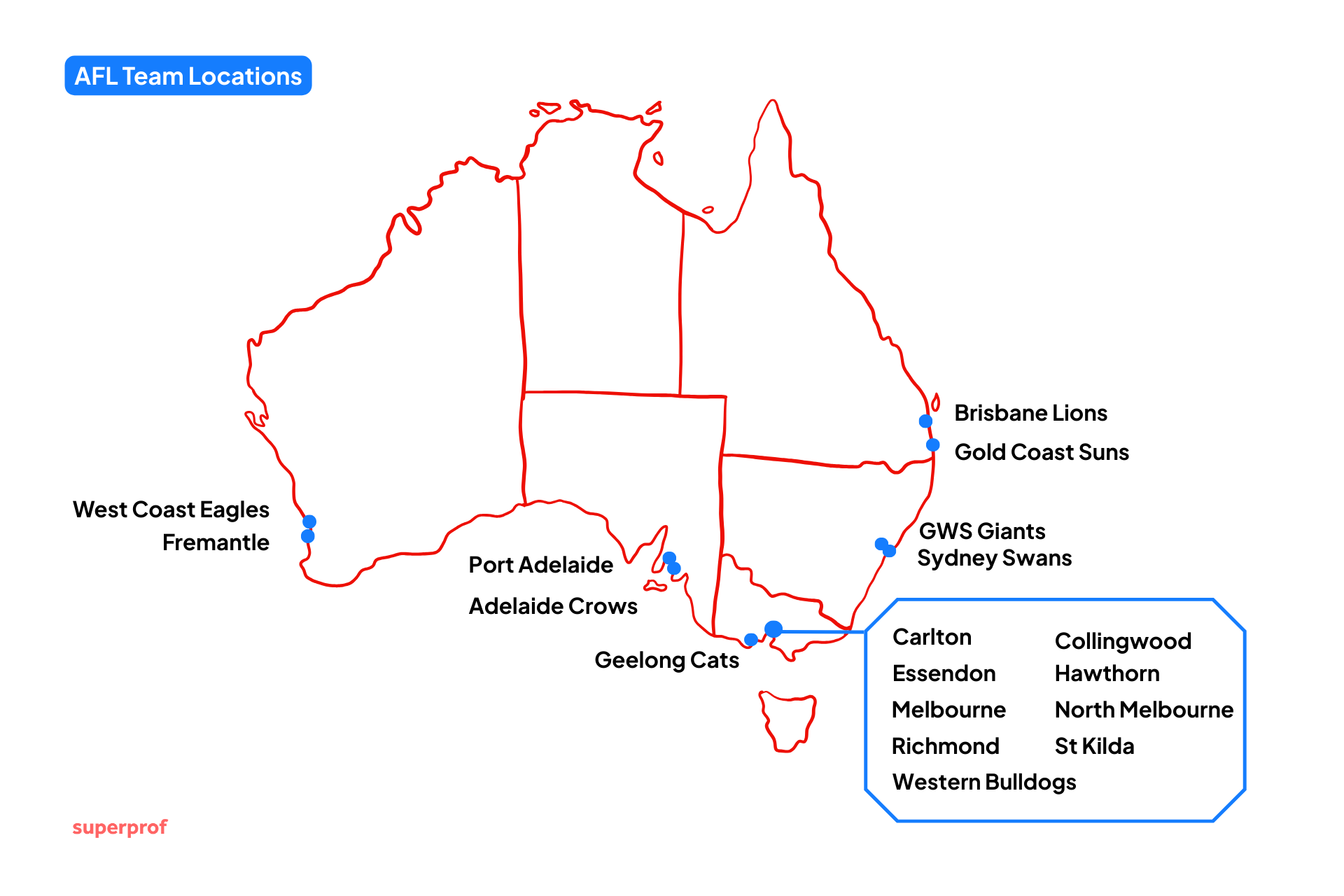
Tasmania Football Club (or Tasmania Devils) was granted an AFL licence in 2023 and will compete in the AFL from the 2028 season.

